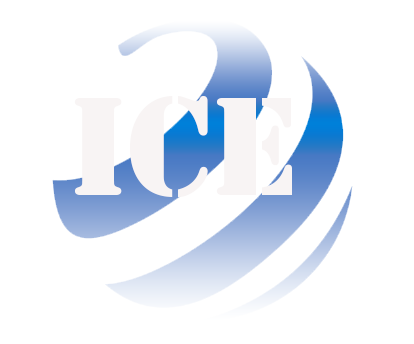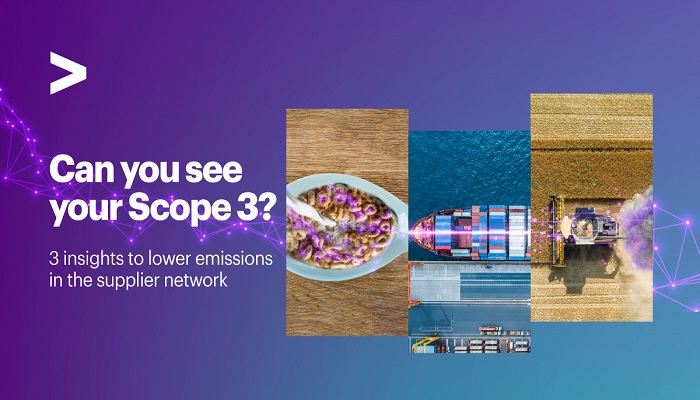Companies Can Improve Sustainability by Finding Carbon Emissions Hot Spots Across Their Supply Chains, Accenture Report Shows
Companies need full visibility across their supplier base in order to make significant progress on net zero targets by 2050. However, that visibility is challenged by the fact that nearly two-thirds of upstream Scope 3[1] emissions in supply chains come from suppliers that companies don’t deal with directly, according to a new report by Accenture.
The Thought you knew the Scope 3 issues in your supply chain? Think again. report examines carbon intensive “hot spots” in supply chains across supplier tiers, identifying where greenhouse gas (GHG) emissions are significantly higher and potentially more difficult to reduce. For the report, Accenture developed a data model that uses industry- and country-level trade and emissions data to calculate the Scope 3 contribution of suppliers to their customers and create an accurate picture of the location and size of upstream GHG emissions.
“Scope 3 emissions are elusive and difficult to track in today’s complex supply chains. Many large companies don’t even know the suppliers beyond Tier 1, let alone have any sort of influence or control over them or their sustainability practices, which is why we have seen little progress in reductions to date,” said Kris Timmermans, Accenture’s Supply Chain lead. “Armed with the knowledge of where their emissions sit, companies can do the really important thing – commit to taking action and collaboration with the entire supplier base and all stakeholders, toward a more sustainable future.”
The model Accenture created can show upstream emissions by country, industry and supplier tier — for example in German automaking revealing beyond the known suppliers in Germany and China to those buried deeper in supply networks from other countries like Poland and South Africa. The model also compares upstream Scope 3 emissions with Scope 1, finding wide variation across industries — for example, the high tech industry’s upstream Scope 3 emissions are 28 times as large as its Scope 1 emissions, compared with the utilities sector, where upstream Scope 3 is only one-fifth the size of its Scope 1 emissions.
Accenture’s analysis reveals that in most cases, if upstream emissions are a significant portion of a company’s total emissions, they tend to occur deeper in the supplier network. For example, upstream Scope 3 emissions for the aerospace and defense industry is many times the size of its Scope 1 and 2 emissions, and these upstream emissions are buried deep in its upstream supplier network — only 20% of its emissions come from its Tier 1 suppliers.
“Our recent research shows that only 7% of companies are on track to reach their net zero commitments, revealing that for the other 93% of businesses, the time to act is now,” said Peter Lacy, Accenture’s Sustainability Services lead and chief responsibility officer. “Even amid economic volatility, ambitions around sustainability are on the rise, however tapping into carbon intelligence is an important piece of the puzzle in converting those ambitions into action and impact. Tomorrow’s leaders are collaborating today to enable circularity and increase sustainable outcomes across the value chain.”
With increased visibility into upstream Scope 3 emissions and carbon intelligence embedded into the core business, companies can make better-informed decisions about how and where to allocate resources; ensure responsible procurement throughout the organization to drive meaningful reductions; and uncover broader enterprise value by creating more efficient, resilient, cost-effective and customer-centric supply chain networks. The report recommends five key actions that all companies can take now to achieve that visibility:
- Conduct a real multi-tier emissions hot spot analysis to set targets and drive the right actions. The insights from such an analysis provide the foundation for an action plan to address the areas of most significant impact.
- Embed sustainability into category planning and supplier selection. Depending on the hot spot areas identified, a company can customize category plans, including emission-reduction strategies, to address hot spots as appropriate.
- Integrate emissions into the supply chain control tower and implement a digital twin. Control towers that centralize visibility and decision making and guiding actions with short- and long-term benefits combined with a digital twin of the supply chain generates the end-to-end visibility necessary to optimize supply chain networks across service, costs, quality, and sustainability — in real time.
- Support suppliers in their ongoing decarbonization efforts. Segmenting the supplier base can help companies tailor their engagement programs appropriately, as long as they’re also improving supplier data quality.
- Collaborate across sectors, with peers, suppliers and ecosystem partners to speed up decarbonization at scale. An intelligent platform solution to aggregate data from multiple parties and make recommendations on the most effective steps towards decarbonization is critical.
Source: Accenture


